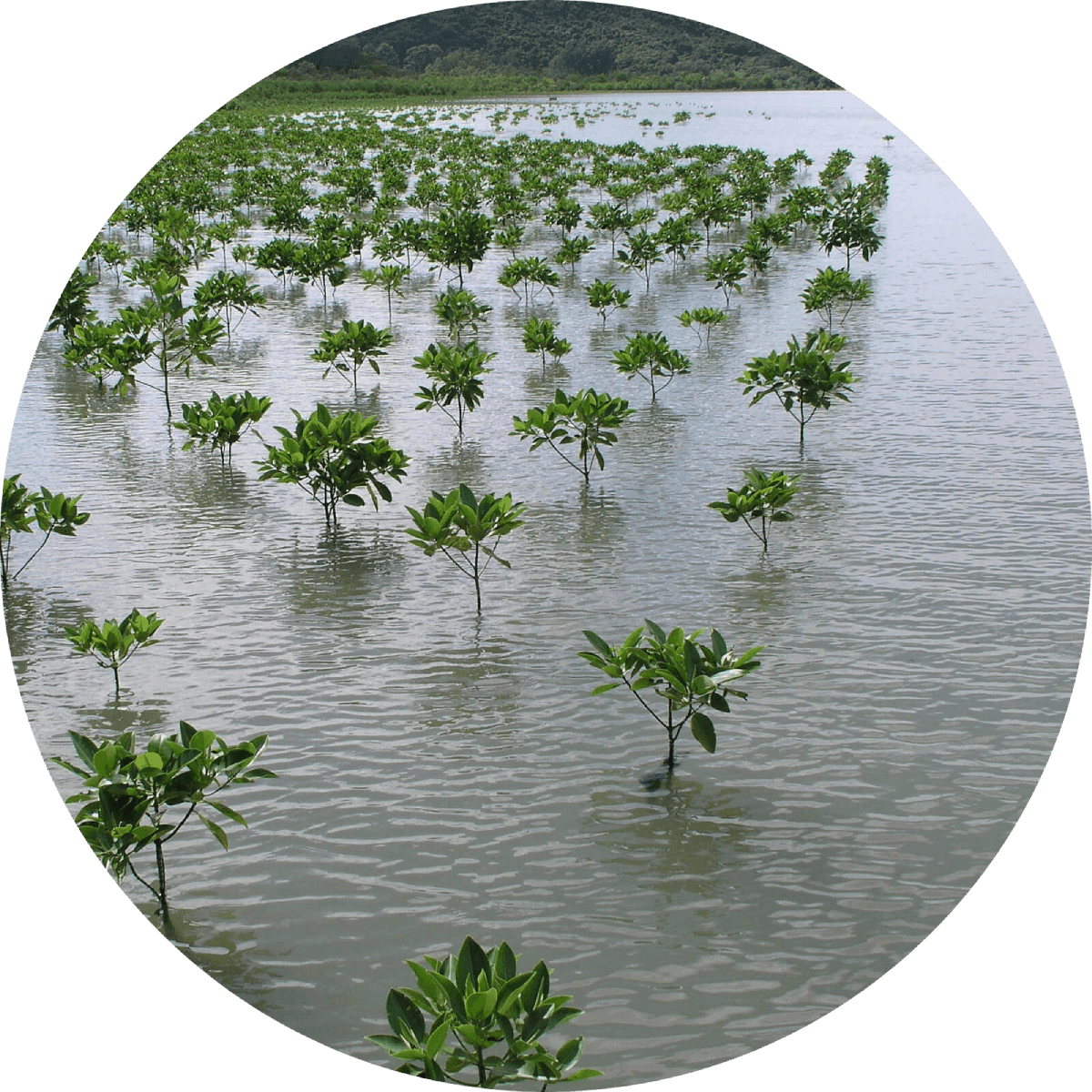". . . the alligator’s future is threatened. Wetland loss plus climate change could spell a disaster for the alligator, as well as the entire bounty of Louisiana’s coast and communities across the entire bottom half of the state . . . Saltwater intrusion and coastal wetland loss put much of the freshwater habitat the alligator depends on in jeopardy. As this habitat disappears, so does the bounty of Louisiana’s coast and all that it supports, particularly the vital natural buffer from more the looming threats of intense storms and sea level rise."
"All crocodilians have the same pattern of producing females at extreme temperatures and males at intermediate temperatures . . . Since climate change has the ability to alter sex ratios, we could see either a dominant female or male population in the future that lacks the ability to reproduce . . . The American alligator is a conservation success story, but it has the potential to become threatened if we don’t monitor for these changes . . . We need to monitor crocodilian species worldwide before the situation becomes too dire.”
- Samantha Bock, a doctoral student at the Savannah River Ecology Laboratory and the Odum School of Ecology at the University of Georgia
". . . the alligators that inhabit the Everglades are showing signs of serious trouble. Their population has dropped, and the ones that are still around tend to look starved . . . They are an indicator of the overall health of the River of Grass. If they're not doing well . . . then neither is the Everglades . . . The problem is the water — not the pollution in it, but the quantity of it . . ."
“The wave of fear follows the gruesome deaths of three Florida women in a week, an unprecedented tally given that there were only 17 recorded fatalities by alligators in the previous 58 years, according to state wildlife officials. Tourists and residents in Florida are being warned not to swim after dark or in areas of thick vegetation, to keep pets on a lead and to stay away from canals between dusk and dawn, when alligators are at their most active. . . "This is my worst nightmare, I'm absolutely stunned by what's happened," said Mr Hardwick. He added that Florida's 1.4 million alligators are more aggressive at this time of year because it is the mating season and because water levels in the Everglades are low after a recent drought, forcing them into residential areas in search of food and water.”
"The first commercial alligator farm was in Florida in the 1890s. Until the 1980s, alligator farms in Louisiana and Florida were mainly geared toward tourism. Research and management efforts during the 1970s and 1980s led to the development of intensive efforts to raise alligators for their hides in environmentally controlled facilities. The farming concept, along with regulated wild harvests, ensured the protection and sustainable use of the species throughout its range. By 1991, the number of farms in Louisiana reached a peak of 134, although only 91 actually sold hides. Florida, Texas, Georgia, Alabama, and Mississippi combined had 96 licensed farmers. Most farms were of moderate size, producing a few hundred to several thousand alligators each year. Total production in the early 1990s was approximately 125,000 hides annually."
"The now-flourishing American alligator has been removed from the endangered species list in states outside its primary territory, the Fish and Wildlife Service has announced. The agency had earlier removed the alligator from the endangered species list in the heart of its territory, Florida, Louisiana and Texas. . . ''Today, the American alligator is biologically secure throughout its range,'' thanks to habitat management and law-enforcement efforts, said Frank Dunkle, director of the Fish and Wildlife Service."
" “We're up to our ears in alligators,” said Frank Davis, a spokesman for the Louisiana Wildlife and Fisheries Service. . . The Federal Government still officially classifies the alligator as either endangered or threatened. But Federal and state biologists agree that the population is thriving in many areas. . . Today Florida's alligator population is variously estimated at 500,000 to a million and Louisiana's at 300,000, with fewer in Texas, Arkansas, Mississippi, Georgia, Alabama, the Carolinas and Oklahoma."
"Populations began to rise and the species was delisted in three Louisiana parishes in 1975 . . . downlisted in Florida and certain coastal areas of South Carolina, Georgia, Louisiana, and Texas in 1977 . . . delisted in nine additional Louisiana parishes in 1979 . . . delisted in the 52 remaining Louisiana parishes in 1981 . . . delisted in Texas in 1983 . . . delisted in Florida in 1985 . . . and delisted in the remaining portion of its range (Alabama, Arkansas, Georgia, Mississippi, North Carolina, Oklahoma, and South Carolina) in 1987 . . . To protect it from accidental shooting, it remains protected under the Endangered Species Act due to its similarity of appearance to the endangered American crocodile."
"The Convention on International Trade in Endangered Species (CITES), which was introduced in 1973 and entered into force in 1975, prohibits international trade in endangered species by assigning each protected species to one of three lists that have different levels or types of protection; Appendix I lists the most endangered species among CITES-listed plants and animals; Appendix II lists species that are not necessarily now threatened with extinction but could become so unless trade is closely controlled; and Appendix III lists species with trade already regulated by a Party to CITES when the Party needs cooperation from other countries to prevent unsustainable or illegal exploitation."
Louisiana State Legislature (Act 550) grants the Department of Wildlife and Fisheries full authority to regulate the alligator season in the state.
"In 1969, Congress amended The Lacey Act to include reptiles, perhaps the most important legislation related to the recovery of American Alligator. The Lacey Act prohibits interstate commerce of illegally obtained wildlife."
"The American alligator (Alligator mississippiensis) suffered noticable population declines by the 1950s and 1960s due to habitat loss and unregulated or poorly regulated hunting. In 1967 it was listed as an endangered species throughout its range in Alabama, Arkansas, Florida, Georgia, Louisiana, Mississippi, North Carolina, Oklahoma, South Carolina, and Texas."
“Although the first farm in the United States was established in 1891 in Jacksonville, Florida, it was not until 1964 that extensive research was initiated in Louisiana by the Department of Wildlife and Fisheries . . . This program included the design of an experimental alligator farm at Rockefeller Wildlife Refuge that led to the development of methods for artificial incubation of alligator eggs, heated controlled chambers for the culture of juvenile alligators, and breeding pens for adult alligators.”
"In 1962, the alligator season in Louisiana was closed, and research studies, focusing on basic life history factors, were undertaken which led to development of a biologically sound management harvest program. . . Alligator populations quickly increased between 1962 and 1972 while alligators were totally protected. In September 1972 LDWF initiated a closely regulated experimental commercial wild alligator harvest in Cameron Parish."


Learn about Maya Lin’s fifth and final memorial: a multi-platform science based artwork that presents an ecological history of our world - past, present, and future.

Discover ecological histories and stories of former abundance, loss, and recovery on the map of memory.

Learn how we can reduce our emissions and protect and restore species and habitats – around the world.

See how art can help us rethink the problems we face, and give us hope that each one of us can make a difference.

Help make a global memorial something personal and close to home. Share your stories of the natural world.